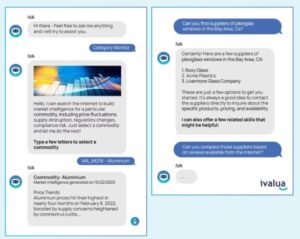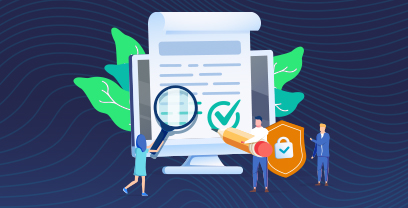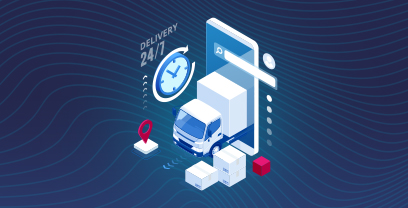Procurement is central to controlling cost, ensuring quality, and keeping supply chains resilient – but it’s not one-dimensional. Sourcing steel for a product line isn’t the same as buying laptops for a new team for example. One is direct procurement, while the other is considered indirect procurement.
There are also other types of procurement that are often overlooked when developing a procurement strategy or mapping the broader procurement cycle.
In this blog, we explain the various types of procurement and how they work, along with real-world examples to help you navigate sourcing strategies at enterprise scale.
Key Takeaways
- Managing direct, indirect, services, and capital procurement requires tailored strategies, as each type carries distinct risks, stakeholders, and workflows.
- Aligning procurement methods and technology to each category improves cost control, compliance, and supplier performance across the enterprise.
- AI-enabled procurement platforms streamline category-specific processes while unifying governance, enabling agility without sacrificing control.
Understanding the Main Types of Procurement and Their Strategic Impact
As enterprises expand, navigating multiple procurement channels becomes not just useful, but essential, particularly when managing four or more distinct types of procurement. Here are the four main types:
- Direct Procurement: Acquiring raw materials, parts, or goods that directly are directly used in the production of a company’s finished products.
- Indirect Procurement: Sourcing goods and services that support operations but don’t go into the final product.
- Services Procurement: Managing external labor or expertise, including consultants, contractors, and agencies.
- Capital Procurement: Purchasing large assets or equipment that require longer planning and approval cycles.
Different types of procurement have different stakeholders, risk profiles, and operational demands. For example, direct procurement strategies might involve hundreds of critical suppliers feeding into production, while indirect spend can span thousands of vendors supporting internal operations.
Services and capital procurement bring their own complexities, requiring specialized workflows, approval paths, and performance monitoring.
It’s important to tailor strategies and technology to the various types of procurement in order to manage risk effectively and maximize value.
The table below gives an overview of the specificities of each procurement type.
Types of Procurement: Examples
| Type | Description | Example | Sourcing Method |
| Direct | Inputs for production | Steel for car manufacturing | Long-term contracts |
| Indirect | Operational supplies | Office software, laptops | Catalog, spot buy |
| Services | Outsourced knowledge/work | Legal consulting, IT services | RFP-based |
| Capital | Long-term asset investments | Machinery, vehicles | RFP + TCO analysis |
Direct Procurement: Managing Production-Critical Sourcing
In manufacturing, direct procurement involves coordinating with hundreds of suppliers across regions, currencies, and material categories. These suppliers provide components and raw materials that are essential to finished goods, meaning any delay or disruption can halt production entirely.
Managing this complexity requires tight supplier integration and real-time visibility, along with careful procurement planning. Let’s examine some of the ways you can accomplish these direct procurement goals:
Managing Supplier Risk across Global Manufacturing Networks
Large enterprises often manage 500 or more suppliers spread across multiple tiers. This global complexity increases their exposure to geopolitical, environmental, and logistical risks, especially when production is geographically concentrated. For example, 75% of semiconductor manufacturing occurs in Asia.
With direct materials accounting for 60 – 80% of product costs, even a minor disruption can have major financial consequences for the company needing those materials. To manage risk, teams need real-time visibility, and the ability to diversify their supply chan.
AI-powered Demand Forecasting and Inventory Optimization
Traditional forecasting relies heavily on past sales, which isn’t always reliable. AI can account for changes in weather patterns, economic signals, and even social trends to predict demand more accurately.
Using a broader data set enables you to anticipate shifts earlier and adjust your procurement plans in real time. By optimizing your inventory using AI, you can balance carrying costs with stockout risks and automatically manage thousands of SKUs across global supply chains.

Indirect Procurement: Controlling Operational Spend Across Departments
Indirect procurement often spans 15 – 20 categories or even more, including IT, marketing, HR, and facilities. The diversity that exists within indirect spend categories makes it a challenge to standardize processes or enforce procurement policy. Without standardized procurement processes, overruns, maverick spend, and compliance risk are likely.
Managing indirect procurement in the enterprise requires coordinating spend across various functions. Without the right e-procurement systems and procurement software best practices in place, inefficiencies can multiply. The following sections break down the most common challenges of indirect procurement and how to solve them.
Standardizing Purchases Across Diverse Business Functions
Even ordering office supplies becomes a complex process when you have to coordinate orders across 50 or more locations – all with different needs and vendors. It’s important to strike a balance between corporate control and departmental flexibility.
tandardizing procurement processes and purchases doesn’t have to mean you’re eliminating choice. Instead, you can guide teams toward smarter decisions that are aligned with corporate policy. Keep in mind, achieving 80% or higher compliance across categories requires intuitive technology and strong change management capabilities.
AI-Driven Guided Buying Reduces Maverick Spend
AI-powered guided buying simplifies purchasing by steering users toward compliant, cost-effective choices, without requiring them to understand every policy detail. It automatically classifies requests, routes them to approved catalogs, and recommends alternatives with side-by-side cost comparisons.
For example, if a user searches for a specific brand, the system can suggest a lower-cost, contract-approved option instead. Guided buying helps reduce off-contract direct and indirect spend while improving usability across departments.
Now let’s move on to the two other types of procurement: Services and Capital procurement.
Services Procurement: Governing Knowledge-based Supplier Relationships
Among all procurement categories, services are often the most complex. That’s because they’re less about transactions and more about long-term relationships and supplier performance outcomes.
Unlike goods, services procurement requires deeper evaluation and ongoing oversight to ensure what’s delivered continues to align with business goals.
Managing Professional Services and Specialized Expertise
Procuring services like legal, consulting, or IT support involves contracts for deliverables, not physical goods. These deliverables can be somewhat abstract. Beyond cost, success depends on the quality of work, expertise, and timeliness. Consistent monitoring of these factors is key. t. Additionally, selecting the right supplier requires evaluating and prioritizing experience, industry qualifications, cultural fit and other factors.
AI Contract Analysis Optimizes Service Delivery and Compliance
AI can help with services procurement by analyzing contracts before they’re executed. They can flag vague or missing deliverables, to help reduce scope creep and eliminate performance disputes.
AI can also be used to track key milestones across multiple agreements and identify billing anomalies or missed obligations. These capabilities help organizations stay on top of service delivery and improve accountability, while ensuring contract compliance.
Capital Procurement: Orchestrating High-Value Asset Acquisitions
Capital procurement is the most strategically complex category. It involves large-scale investments that require long-term procurement planning and tight coordination across departments, for example, manufacturing equipment, vehicles, or infrastructure. Decisions about capital procurement have significant long-term impact on operations, budgets, and performance.
Cross-Functional Coordination for Major Capital Investments
Purchasing high-value assets is a process that often spans multi-year budget cycles and planning phases. Engineering teams focus on technical specifications, while finance evaluates total cost and return on investment (ROI). If teams are not aligned on procurement policy, poor decisions can lead to costly bottlenecks and underperforming assets that burden procurement operations.
AI-Enhanced Total Cost of Ownership Analysis
AI enables smarter capital planning by analyzing historical performance data to forecast maintenance needs and replacement timelines. It can model total cost of ownership (TCO) scenarios, factoring in everything from energy usage to productivity gains or losses.
For example, Ivalua’s TCO analysis capabilities support more informed, future-focused capital investment decisions, reducing surprises and increasing long-term value across the entire procurement cycle.
Procurement Methods and How They Vary Across Types of Procurement
Choosing the right procurement models will directly affect cost savings, supplier performance, and your competitive advantage. As spend categories become more specialized, the procurement approaches you choose must be able to adapt to match the complexity, risk, and value of each purchase.
Common Procurement Methods
Most organizations rely on a set of foundational procurement methods, including:
- Request for Quotation (RFQ): Best for standard, price-driven purchases with clear specifications.
- Request for Proposal (RFP): Ideal for complex needs where factors like experience, service quality, and innovation matter.
- Direct Purchase or Spot Buying: Used for urgent or one-off purchases, typically low-value.
- Contract-Based Procurement: Applies when long-term supplier relationships or high-volume commitments are needed.
- Reverse Auctions: Useful in highly competitive markets where suppliers compete on price in real time.
These methods constitute a toolkit for sourcing, but choosing the right one depends on what you’re buying.
Matching Methods to Procurement Types
Each procurement type requires tailored procurement approaches and sourcing strategies:
- Direct procurement favors long-term contracts and strategic supplier partnerships to ensure continuity and quality.
- Indirect procurement often uses catalogs, spot buys, and framework agreements to enable agility and control.
- Services procurement leans heavily on RFPs, given the need to evaluate expertise and qualitative outcomes.
- Capital procurement typically involves formal RFPs, budgeting cycles, and TCO-based evaluations.
Aligning your method to the procurement type will yield better results and help you avoid overcomplicating simple buys or oversimplifying strategic sourcing. But how can you be certain you’re using the right method for your upcoming purchase? AI can help.
How AI Optimizes Method Selection
AI in procurement can enhance your strategy by analyzing historical outcomes, supplier performance, and category risk to recommend the most effective sourcing method for a given scenario.
It can suggest when to run an RFP instead of an RFQ, or flag when spot buys are being overused in a category better suited for contract-based procurement.
AI also learns from past transactions, so it’s able to make smarter, faster decisions to help procurement teams apply the right tool at the right time.
How to Choose the Right Procurement Software for Every Procurement Type
Managing the diversity of procurement types—direct, indirect, services, and capital—requires software that can adapt to each one’s unique workflows, approval paths, and compliance needs.
That’s why selecting the right procurement technology is essential for enterprise-wide efficiency and control.
The ideal solution should support:
- Role-based workflows for each procurement category
- Integrated contract management and sourcing tools
- Real-time spend visibility across procurement operations
- Automated invoice processing and payment validation
- Tight ERP integration for streamlined financial control
Modern procurement management platforms like Ivalua are built to handle this complexity. They offer pre-configured templates and customizable rules and procurement workflows that align to both centralized and decentralized procurement frameworks, allowing organizations to scale without adding friction.
Explore Ivalua’s Procurement Software to see how it supports Source-to-Pay operations across every procurement type.
Case Study – How Crédit Agricole Achieved 100% Procurement Digitization
Facing inconsistent procurement operations across global branches, Crédit Agricole turned to Ivalua to centralize sourcing, contract management, supplier onboarding, and invoice processing. Ivalua’s procurement platform delivered full transparency into spend, compliance tracking, and risk oversight.
Results:
- 100% of procure-to-pay workflows digitized across geographies
- Enhanced spend visibility and audit traceability
- Strong cost savings and regulatory alignment
Within months of deployment, procurement became more agile, standardized, and cost-controlled—delivering visible value across all procurement categories.
Read the full Crédit Agricole case study.
Balancing Procurement Complexity with Unified Control
As a modern enterprise, you need to manage a wide range of procurement types, and treating them all the same is inefficient, costly, and risky. However, decentralization in procurement management can create fragmentation and weaken your leverage with suppliers, while complicating compliance and impeding data-driven decision-making.
AI-powered, unified procurement management platforms like Ivalua support category-specific workflows while enforcing enterprise-wide standards for data, governance, and performance. It’s a centralized procurement platform that allows you to support flexible procurement frameworks and adapt to any procurement type without sacrificing control.
Leader in major market analyses, most recently in the 2025 Gartner® Magic Quadrant™ for Source-to-Pay Suites, Ivalua delivers on average a 393% Return on Investment (ROI) for its customers, according to an independent study.
| See how a unified Source-to-Pay platform drives control, savings, and visibility across all procurement types. Watch Demo | Find Out More |
FAQ
What are the four main types of procurement?
The four main types are direct, indirect, services, and capital procurement. Each requires different sourcing strategies, workflows, and stakeholder involvement based on its role in the business.
How does AI improve procurement?
AI enhances procurement by automatically classifying spend, recommending sourcing methods, flagging risks, and detecting anomalies. It adapts to each procurement type to improve efficiency, compliance, and decision-making.
Which procurement type is hardest to control?
Services procurement is often the hardest to govern due to its lack of standardization and deliverable-based contracts. It becomes even more challenging when departments engage vendors without involving procurement.
Why use one platform for all types of procurement?
Using a single platform unifies processes, reduces fragmentation, and ensures consistent data and governance. It enables organizations to manage all procurement types with greater control, visibility, and scalability.




